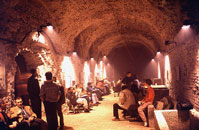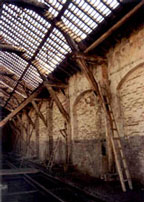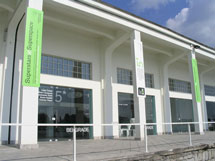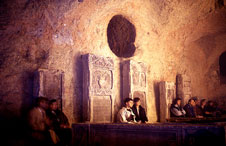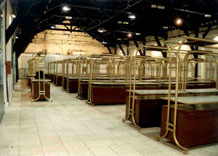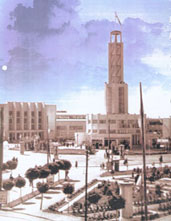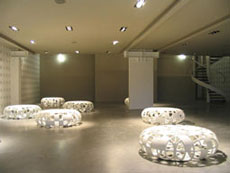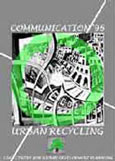 Urban
Recycling Strategy for Urban
Heritage Rehabilitation
Urban
Recycling Strategy for Urban
Heritage Rehabilitation
All
the new states established from former Yugoslavia are nowadays in one or another
phase of transition, and Serbia entered that transition period last. The
previous period, the nineties, was marked with economic and cultural sanctions
and ended with collapse of the national economy. During that time Serbian urban
heritage was either ruined or neglected and its historic, cultural or
architectural values were vanishing together with its physical attributes. There
were several reasons for this condition, without mentioning general poverty or
fall of economy. First, the heritage protection institutions were helpless in
their efforts to stop the ruining of the important buildings or areas of the
cities, not only because of the reduced public interest in them, or misuse by
the some of the investors. The more serious part of the guilt was in their rigid
and mostly administrative approach to revitalization, without being resilient
and encouraging for private investors. The second important reason was the
strict and inappropriate planning and legal system, which didn’t follow the
changes in other segments of the society. The law either ignored the urban
heritage as a value for preservation and revitalization, or, if not, established
such a set of rules that no investor or authority was capable following.
These
are some of the factors that caused worthy Serbian urban heritage, being today
recognized as “brownfields”, to remain neglected. Only rare urban designs or
revitalization studies have examined possibilities and advantages of its
functional and physical transformation, and one of them was the Urban Recycling
Strategy. [1]
The term was first introduced in annual Urban Planning Conference Communication
(CEP, Belgrade, 1996), later developed through the author’s master thesis in
Belgrade School of Architecture, and later implemented and adopted in some local
authorities as a legitimate strategy in revitalization process (Kotor
Municipality Spatial Plan, 1997, Belgrade General Urban Plan 2021).
The
urban recycling strategy was based on the simple devotion to rational use of
city resources such was inbuilt land, instead of spending free or new land for
new development. The sites suitable for urban recycling are only those with
recognized exceptional characteristics, from historic, architectural, mental,
urban or just physical values, that should be saved and improved by
implementation of this strategy. The reuse of particular heritage would be
considered urban recycling only if the process is reversible, bringing a new
value to the site, engages the local and new population in new jobs, activities,
design, and attractiveness, and therefore producing public, social, and
environmental benefits.
During the last years of the ’90s and after the political change in 2000, a new, educated group of investors and organizations appeared, willing to negotiate with governments and authorities on rehabilitation issues and contribute not only to their own profit and welfare. Since only governments financed most of the rehabilitation in the previous period, and the transitional change in the economy had just begun, neither the knowledge nor skills had been developed by the authorities for such successful negotiations. Different models and strategies for revitalization may be used, but only efficient and feasible ones are going to be accepted both by the developers and the authorities. One of such is the Urban Recycling Strategy, promoted as a partnership between the authorities and the other profit or non-profit organizations. This can be a legal, convenient and efficient model for all: the owners, heritage protection institutions, developers and what is the most important, for host cities’ communities and their neglected heritage.
[1]
Recycling in Merriam - Webster Dictionary:
to pass again through a series of changes or treatments; in American heritage Dictionary: To
start a different cycle in; to recondition and adapt to a new use or
function: recycling old warehouses as condominiums.
Key words: RESOURCES, URBAN REDEVELOPMENT, REVITALIZATION, MANAGEMENT
